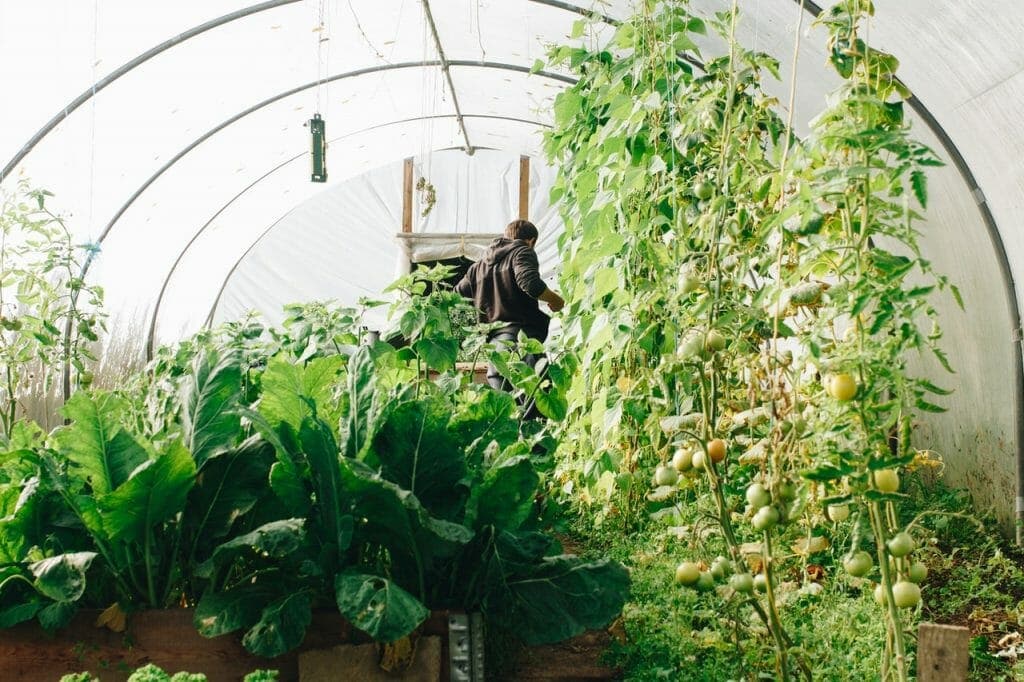Written by Admin and published on https://gardeningbank.com/
For many of us, spring presents one of the year’s greatest gardening challenges: protecting tender new growth from damage due to cold. Frost damage, freezing death, root damage, and frost cracks on bark are four primary negative effects of severe drops in the temperature.
In early spring, when the threat of frost is especially great, closely monitoring weather conditions via weather radio, TV, and websites for reports of expected cold spells is imperative. That way, when frost is predicted, you can prepare for it. It’s also a good idea to periodically check the temperature at ground level near your plants to see how cold it is for them and whether or not you need to do something about it.
How to Save Plants from Frost Damage (9 Easy Steps)
A surprising change in weather can be devastating to your garden. More so to cold-sensitive plants that are too delicate to withstand sudden temperature changes.
Frost threat – if not prepared for – often results in frost and root damage, which is why we’re going to teach you how to save plants from frost damage today.
One of the most important steps towards saving your plants from frost damage is to frequently monitor the ground temperature at ground level using soil PH meter and weather reports to know when there’s a rise or fall in temperature that needs urgent actions
What is Frost Damage in Plant?
Frost damage in plants happens when a plant is bared to temperatures below the freezing point.
The liquid inside individual plant cells transforms from a gaseous state to liquid, thereby freezing and forming thin layers of ice crystal.
This crystal disorganizes the movement of fluids, thus rupturing the tough cell walls.
Note: Experts say some vegetables taste better after a frost.
Frosts can occur in two forms. The first is called radiation frost and also known as light frost, which is common during the clear and cloudless night. Light frost occurs when the air temperature is above freezing temperature.
And the second is called effective freeze, which is also known as windborne freeze, which occurs when a cold air mass moves into an area to replace air also known to be a hard frost.
When Does Frost Damage Occur?
Frost damage occurs where the temperature dips below the melting point of water-mostly in tropical zones.
Note: low temperatures can cause more damage than high temperatures.
This is why sloping areas facing south or west will encounter less frost damage since it is warmer. So, it occurs more on the north or east sides and these sides have been termed frost pockets.
Before we delve into the precautionary measure on how to save plants from frost damage, it is important to know some solutions are relative to some plants and this depends on your plant type.
It is vital to note that a light frost within 28°F to 32°F can cause severe damage to plants as a hard frost beneath 28°F will.
Let’s have a quick look at them:
Categories of Plant-Sensitivity
Very hardy plants can thrive during frost because they contain internal protection mechanisms. Moderately hardy plants can accumulate sufficient solutes to resist frost damage.
Slightly might be able to tolerate freezing down about -5°C. Tender plants as they are yet to be established will find it difficult to fight low temperatures. And so,
Tender plants can be damaged earlier than others since their survival is dependent on growth level or maturity.
Now that you are aware of these important categories, let’s quickly look at how to save plants from frost damage:
How to Save Plants from Frost Damage
There are two methods for saving plants from frost damage. Namely; active and passive. The most applicable is passive.
To save plants from frost damage:
1. Have a good knowledge of frost dates
You can periodically check for weather forecasts for fluctuations in weather, to have a close prediction on when to expect frost.
2. Harden off seedlings
In preparation to save their plants from frost damage, it’s understandable that some gardeners keep their little greens indoors – sometimes way before the signs of frost.
However, try not to be overly protective by exposing your plants to outdoor conditions. This will in turn strengthen and lend them the opportunity to stand firm during low temperatures.
3. Keep potted plants inside
Potted plants are most susceptible to damage during frost. Since they do not benefit directly from the soil and other elements, it’s best practice to leave them indoors.
4. Add a thick layer of mulch
Make use of straw, wood chips, or just a heap of leaves to add protective covering. This is more like clothing the plant from cold. You can add mulch to a depth between 3 to 6 inches, to create a good barrier.
5. Water the plant moderately before frost
Water the plant? Weird, right? But thanks to science, the watered soil releases moisture during the night, which can help raise the temperature and keep the plants warmer.
Be sure to water the plants in the midday when the temperature is still warm.
6. Use cloche to protect the plant
This is the use of containers that has a bell / triangular shape or inverted flower bucket to cover most small crops.
It could be plastics or glasses. Just stake them firmly to the ground to avoid being blown away by air.
7. Cover plants before nightfall
You can protect large groups of plants using blankets, bedsheets, or towels. You can as well use paper, preferably newspaper.
Here’s how:
Before laying the fabric of your choice, be sure to place sticks firmly to the ground, they should be longer than the plants so when blankets are placed it doesn’t cover the plants entirely and suffocate them.
The key is to protect them, and not restrict their growth. To do this, ensure the blankets are slightly heavy and long so you don’t have the frost manipulate the roots or stems.
Lastly, place stones on the sheets to create restraint during windy nights.
8. Warm the plants with steel jugs
Fill some steel jugs with water then gently place them under the sun and let them heat the whole day.
After which you can gently place the jug amongst the plants and cover them. The heat from the jug would assist the soil in keeping the plant warm.
9. Other procedures
There are other ways you can use to fight frost damage like using heaters, sprinklers, and wind machines but this requires actions amidst the frost.
It might seem workable but might be counterproductive if you manage a big garden by yourself.
You too deserve some rest during this period.
Conclusion
How you prepare for Frost damage might make or mar all your gardening efforts. But with these knowledgeable tips at your disposal, you can fully equip yourself beforehand.
Follow these procedures religiously on how to save plants from frost damage and enjoy a blooming garden all year long.
Original post here https://gardeningbank.com/how-to-save-plants-from-frost-damage/.



